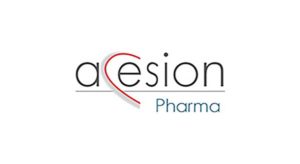 Acesion, the biotech developing first-in-class novel therapies for atrial fibrillation (AF), has today announced positive data from its phase two trial of AP30663, a first-in-class SK ion channel inhibitor for conversion of AF to normal sinus rhythm.
Acesion, the biotech developing first-in-class novel therapies for atrial fibrillation (AF), has today announced positive data from its phase two trial of AP30663, a first-in-class SK ion channel inhibitor for conversion of AF to normal sinus rhythm.
The trial enrolled 63 patients with a current episode of AF and tested two intravenous doses of AP30663, 3 and 5mg/kg, compared to placebo. The primary endpoint was the proportion of patients with AF conversion to sinus rhythm within 90 minutes of infusion start. The proportion (conversion rate) for AP30663 5mg/kg exceeded 50% with no conversions observed for placebo and with a numerical dose-response between the 3 and 5mg/kg dose.
The trial employed a Bayesian analysis and there was a probability (posterior probability) >99.9% of a true AF conversion rate greater than placebo for each of the two doses. The results from the Bayesian analysis were supported by a traditional analysis of the primary endpoint, demonstrating highly significant p-values for each of the two doses compared to placebo.
The safety profile was consistent with that observed in two previous phase one trials with AP30663. The treatment was well tolerated, with no serious adverse events (AEs) reported in the AP30663 groups. The main safety concern with currently available AF drugs—ventricular arrhythmias—were not seen in the trial. A transient increase in the electrocardiogram (ECG) QTc interval compared to placebo was seen with both doses. This increase in QT interval was less than, or comparable to, what is seen with some currently available drugs. Based on non-clinical studies with AP30663, as well as human genetic data, the QT effect can be ascribed to a compound-specific off-target inhibition of the hERG ion channel.
Acesion is advancing an oral SK channel inhibitor program for chronic maintenance treatment to prevent AF recurrence, using a second generation molecule with higher specificity that avoids ventricular effects, including hERG channel inhibition, while maintaining efficacy in preclinical models.
Acesion has a pipeline of novel, first-in-class, orally available, small molecules that inhibit the SK channels. In pre-clinical studies, inhibiting the SK channels has been shown to result in pronounced antiarrhythmic effects in the atria while avoiding effects on the ventricles, the major chambers of the heart. Furthermore, the SK channel has strong genetic validation, with genes encoding the SK channels having one of the strongest associations to AF in human genome-wide association studies.
Acesion builds on 20 years of know-how with development of small-molecule SK inhibitors and is the world leader in the field of SK channel inhibition, being the only company able to identify and progress SK channel inhibitors into clinical trials.
Anders Gaarsdal Holst, chief executive officer of Acesion, said: “This clinical trial has proven the general mechanism of action of SK channel inhibition for treatment of AF. It further de-risks our pipeline of small molecule SK inhibitors, including AP31969, our ongoing second generation oral lead program, which targets the much broader and chronic treatment indication of sinus rhythm maintenance and which is planned to start phase one in 2023.”
Jørgen Søberg Petersen, chairman of the board of directors at Acesion, said: “With these impressive, first-in-class, clinical proof-of-concept data, we are very excited to see the pioneering efforts of Acesion coming to fruition. With clinical proof-of-concept data on the first generation molecule, Acesion has significantly de-risked their SK channel inhibitor program and we see a great potential for this novel class of compounds for the treatment of chronic AF.”
John Camm, Acesion scientific advisory board member added: “With the numbers suffering from atrial fibrillation forecast to grow dramatically in the coming years, and with the many safety issues associated with currently available drugs, there is a great unmet need for safer AF treatments that can decrease the risk for patients, but also remove barriers for physicians wanting to keep their patients in sinus rhythm by treating them with an antiarrhythmic drug. This novel mechanism holds the promise to deliver on these aspects.”












